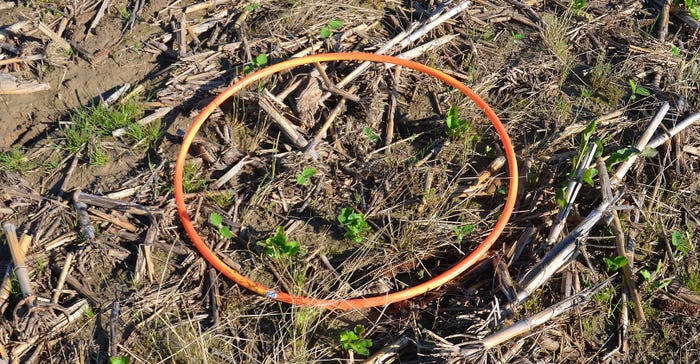
Everyone who raises soybeans knows they compensate for missing plants. But just how much can they compensate? Before you answer, read this story and check out the photos.
The story should begin “Once upon a time,” because it sounds like a fairy tale. But it’s 100% true.
A 14-acre farm plot operated by the FFA ag alumni group in Franklin, Ind., was planted during the first week of June in 2019. Three-fourths of the field consists of somewhat poorly drained Crosby soils without working tile, with a hillside of Miami soil thrown in for good measure. The other fourth is darker Brookston soils, which are poorly drained, but higher in organic matter and somewhat less prone to soil compaction.
Like almost every soybean field planted in 2019, at least part of this field was somewhat wetter than desired. The planting trench didn’t always close properly. To say the stand on three-fourths of the field was less than desirable is an understatement.
I know. I roamed the field in late June checking the stand. Sometimes, I was literally hunting for soybean plants! More than once I threw a hula hoop at random and found only one, two or even no plants within the hoop.
My conclusion was that the stand on three-fourths of the field averaged 40,000 at best, being generous. The stand on the darker soil was around 100,000. Steve Gauck, sales agronomist for Beck�’s, Greensburg, Ind., says 80,000 plants is sufficient to achieve full yield potential if weeds are controlled. That brings up another factor — weeds.
Fortunately, the field wasn’t flush with weeds; there were patches, primarily marestail. Unfortunately, when the custom applicator came to spray the field, he noticed people at a baseball game at the school next door staring at him and, wisely, thought better of it. By the time he came back, weeds were 2 feet tall.
The field should have been replanted, but by the time it was dry enough, the operator was too busy.
The results
By mid-September, I was impressed with how much individual plants had compensated. They were bushing everywhere. I asked Gauck to come look. Nathan Bush, an agronomist with Greene Crop Consulting, Franklin, came along, bringing his drone.
Gauck soon acknowledged how well individual plants branched, and how many nodes there were per plant. He also commented, however, that there were still large gaps with no plants. How much could it make? Maybe 30 bushels per acre? Maybe.
Then Bush displayed his aerial image. There were more gray spots indicating no vegetation than green spots in three-fourths of the field. My heart sank.
That was until the combine ran and the soybeans went over the scales. The entire field made 40 bushels per acre. I was surprised. Bush was shocked. Gauck could hardly believe it.
When is 40 bushels per acre something to write about? When you’re hoping for 25 bushels per acre and would have settled for 20!
And this is no fairy tale!
About the Author(s)
You May Also Like




